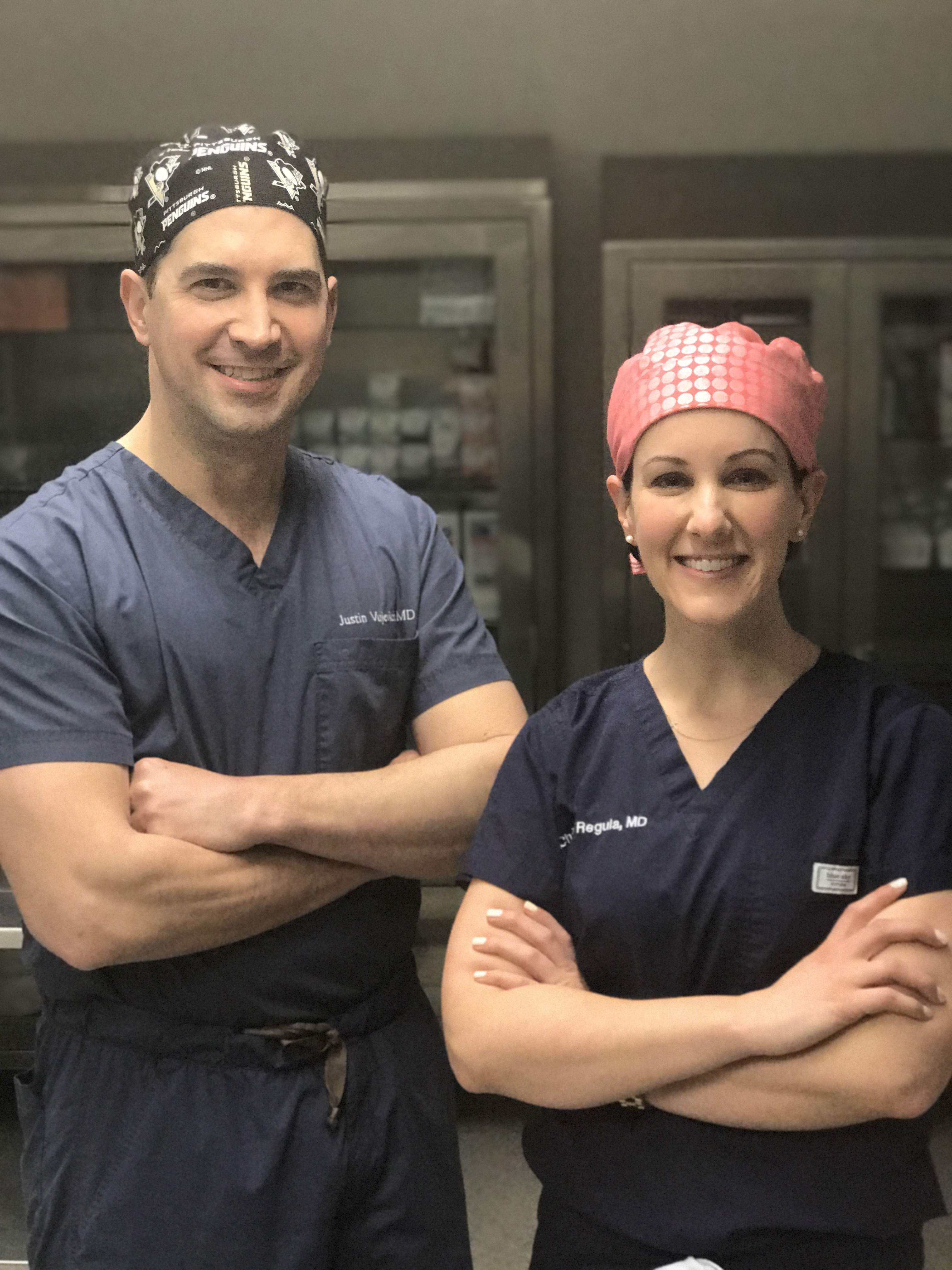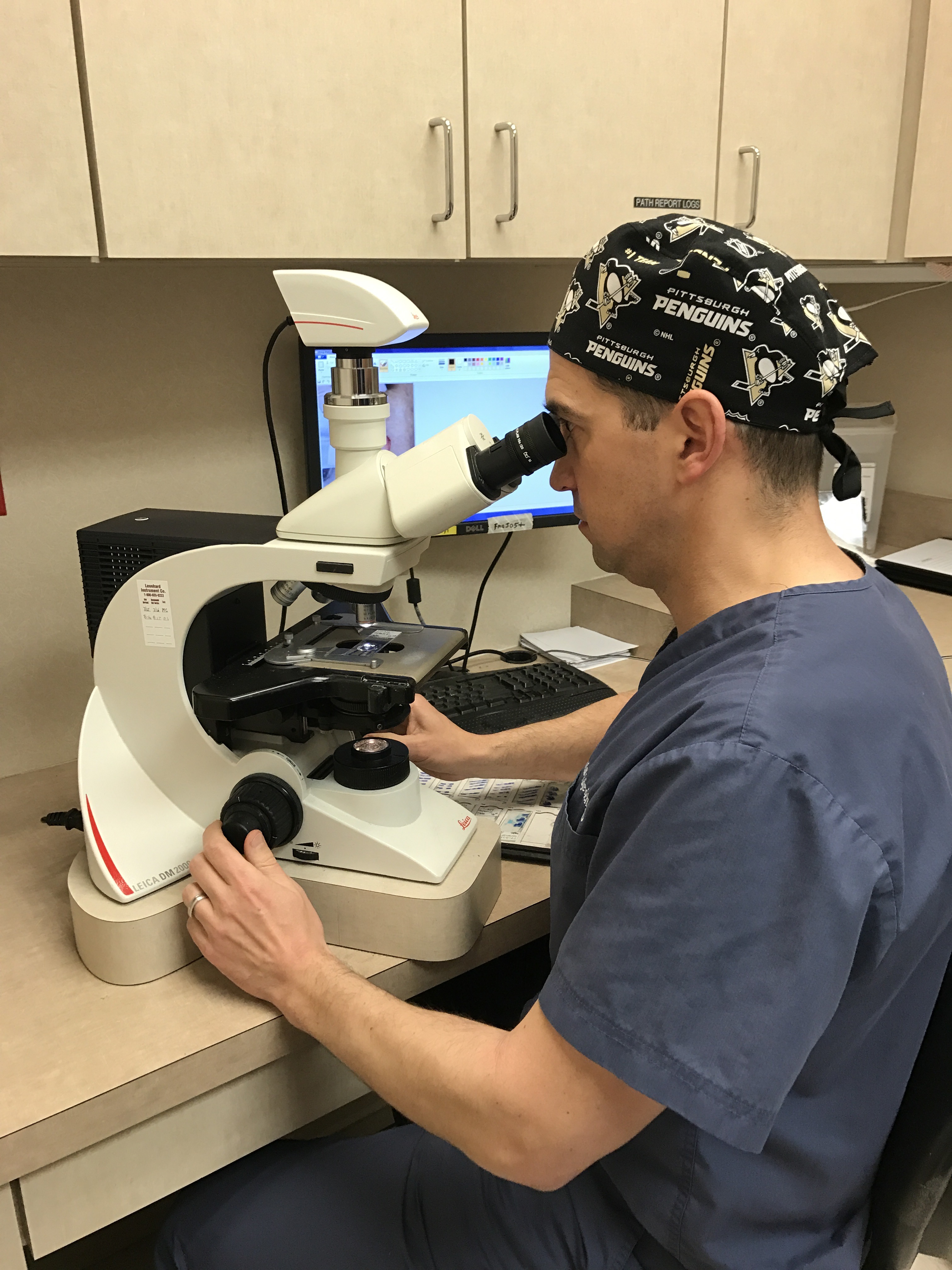What is Mohs Surgery?

Two of our Mohs Surgeons, Dr. Justin Vujevich and Dr. Christie Regula.
We often hear, "What is Mohs surgery?" as this type of procedure may be new to most patients. Mohs surgery is the most advanced, accurate, and highly specialized treatment for skin cancer. Our expert surgeons are fellowship-trained and members of the American College of Mohs Surgery. The procedure is named in honor of Dr. Frederic Mohs, who pioneered the procedure in the 1940s.
Mohs surgery involves surgically removing the skin cancer, processing the tissue in our office laboratory, microscopically examining the cancer cells to ensure complete removal, and reconstructing the surgical defect. This technique maximizes the cure rate for the skin cancer, while minimizing the amount of removed normal skin.
Our surgeons, Dr. Justin Vujevich, Dr. Christie Regula, and Dr. Ryan Andrulonis received extensive training through a Mohs surgery and surgical oncology fellowship. In addition, they are members of The American College of Mohs Surgery.
Want to learn more? Watch a video on Mohs Surgery.
Why is Mohs Surgery Unique?
Mohs surgery is a unique procedure because of the way it is performed. The surgeon can see where the cancer stops during surgery, which isn’t possible with other types of treatment for skin cancer. Not only does Mohs surgery have a high cure rate, but it allows you to keep as much healthy skin as possible. As you’ll read more about below, your surgeon only removes the skin with cancer cells, which is especially important if the procedure is in an area with little tissue such as your hand, eyelid, ear, etc.
Can Any Skin Cancer Patient Have Mohs Surgery?
Mohs is not recommended for every patient. You should speak to your dermatologist and referring physician about your treatment options. Although each case can be different, most Mohs patients have basal cell carcinoma or squamous cell carcinoma that is aggressive or large, is in an area with little tissue beneath, or was previously treated and has returned. Mohs surgery is also used to treat other rare types of skin cancer.
Scheduling an Appointment
If you are diagnosed with a skin cancer, have your referring physician notify our office first at 412-429-0276. Once we receive the necessary information, our office will call you to schedule an appointment.
How Should I Prepare for Mohs Surgery?
If possible, arrange someone to give you a ride to and from the office. Plan on spending at least one half of the day with the doctor. The morning of your procedure, shower or bathe as normal. Wear comfortable, ready-to-wash clothing. Take your regularly-prescribed medications unless you are told not to by your referring physician. Eat a good breakfast. You may bring snacks and beverages to the office.
Because it is difficult to estimate how much time your surgery will require, we advise that you bring reading materials, work, portable music player, or personal computer. Our office is wi-fi equipped. If you have any other questions about preparing for your Mohs surgery procedure, please don’t hesitate to call our office beforehand.
What Should I Expect the Day of Surgery?

Dr. Justin Vujevich examining tissue at the microscope.
Arrive at the office 1/2 hour prior to your scheduled time. There is free parking with disabled accessibility in the lot located in the back of the building.
After arriving, you will be brought into a procedure room by one of the staff. A history and physical exam will be performed. The surgical site will be verified and informed consent obtained.
After numbing the area with local anesthetic, the doctor will remove the skin cancer. Once the tissue is processed onto slides, the doctor will examine the removed tissue under a microscope to identify any remaining cancer. If remaining cancer cells are present, the doctor will remove another layer from your skin where the remaining cancer cells were found.
This process continues until there is no remaining cancer cells seen on microscopic examination. After confirmation of clear surgical margins, the doctor will reconstruct your surgical wound in the ambulatory surgical center the same day.
What Should I Expect Post-Procedure?
Plan on wearing a pressure bandage and not getting the surgical area wet for 48 hours. As with any surgical procedure, you may experience some swelling, pain, redness, or bleeding.
Detailed wound care instructions will be provided by our staff. You may need to buy petroleum jelly, gauze or bandages and apply these daily to your surgical wound.
Avoid alcohol, smoking, or non-prescribed blood-thinners during your recovery period. Weight lifting, aerobic exercise, or swimming may be prohibited for several weeks post-procedure.
For any other questions regarding a Mohs surgery procedure, please get in touch with our team at Vujevich Dermatology Associates.
